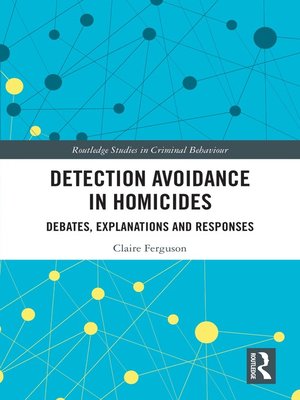Detection Avoidance in Homicide
ebook ∣ Debates, Explanations and Responses · Routledge Studies in Criminal Behaviour
By Claire Ferguson

Sign up to save your library
With an OverDrive account, you can save your favorite libraries for at-a-glance information about availability. Find out more about OverDrive accounts.
Find this title in Libby, the library reading app by OverDrive.



Search for a digital library with this title
Title found at these libraries:
| Library Name | Distance |
|---|---|
| Loading... |
Detection Avoidance in Homicides: Debates, Explanations and Responses presents theory and research on how offenders avoid detection and the challenges and opportunities these efforts pose to investigators.
From a scholarly perspective, the book presents a continuing history of research on detection avoidance by offenders, discusses the features of complex death investigations involving detection avoidance, and critiques the current frameworks used for conceptualizing these behaviors. Dr. Ferguson focuses on the key debates in the literature, argues for collaborations between researchers and practitioners to remedy siloing, and explores the reality of detection avoidance in homicides as complex and multifaceted. While detection avoidance behaviors have the potential to negatively impact sudden death investigations and frustrate criminal investigations specifically, their use also creates broader problems. These include many problematic effects on family members of the deceased, police officers, police agencies and the communities they serve. Offenders choosing to use detection avoidance behaviors challenges the efficient use of public resources, puts at risk the successful adjudication of homicides, and creates a public safety issue. The book explains detection avoidance using learning, situational, individual and gender-based theories, including proposing whether it may be a form of coercive control used by intimate partner abusers. Finally, how detection avoidance by offenders is recognized and responded to in sudden death investigations is addressed, with specific reference to useful examples of policy reform implemented by various police agencies internationally.
Providing research and theory to explain detection avoidance and best practice for responding to it, this book will be of great interest to students and scholars of criminology, forensic science and psychology. It will also be useful to professionals working with homicide offenders.







